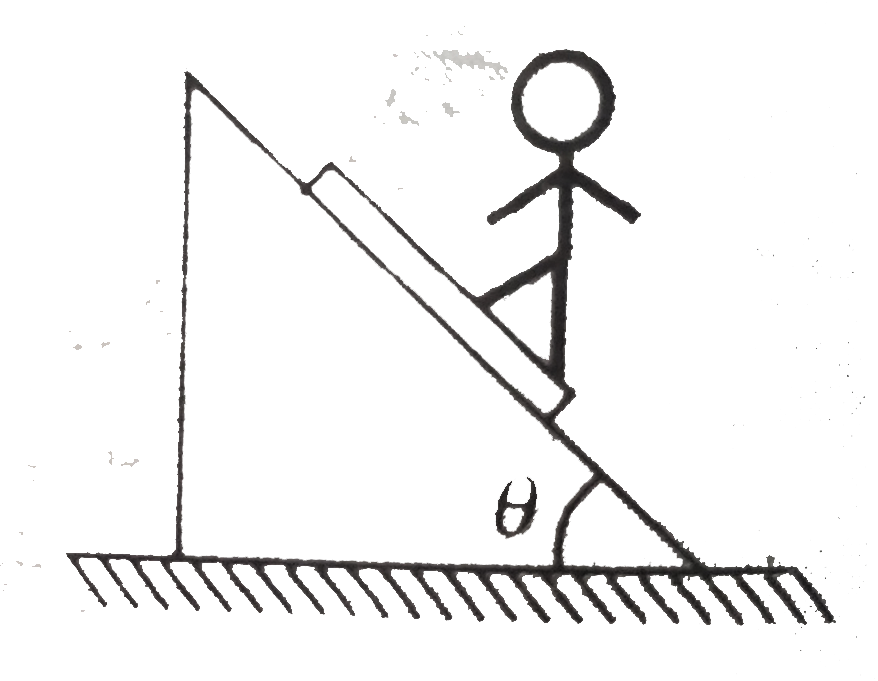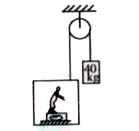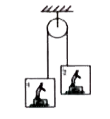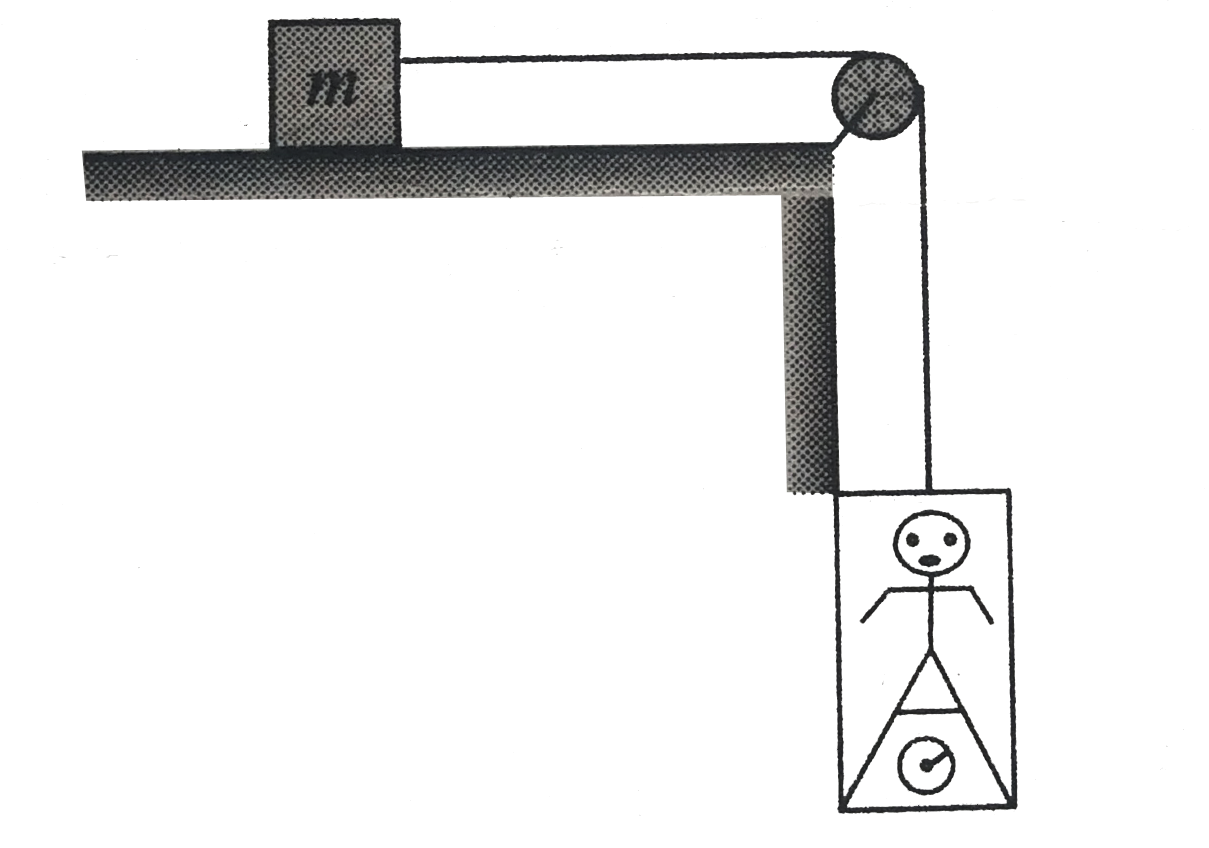In fig., the mass of the man is M. Calculate the mass of the man as registered by weighing machine. Assume weighing machine, man, and wedge all are stationary.

Weight shown by machine is N=Mgcosθ. So the mass shown by the machine will be N/g=Mcosθ

Topper's Solved these Questions
- BOOK - CENGAGE PHYSICS ENGLISHCHAPTER - NEWTON'S LAWS OF MOTION 1EXERCISE - Exercise 6.319videos
NEWTON'S LAWS OF MOTION 1
- BOOK - CENGAGE PHYSICS ENGLISHCHAPTER - NEWTON'S LAWS OF MOTION 1EXERCISE - Exercise 6.413videos
NEWTON'S LAWS OF MOTION 1
- BOOK - CENGAGE PHYSICS ENGLISHCHAPTER - NEWTON'S LAWS OF MOTION 1EXERCISE - Exercise 6.111videos
NEWTON'S LAWS OF MOTION 1
- BOOK - CENGAGE PHYSICS ENGLISHCHAPTER - MISCELLANEOUS VOLUME 2EXERCISE - INTEGER_TYPE10videos
MISCELLANEOUS VOLUME 2
- BOOK - CENGAGE PHYSICS ENGLISHCHAPTER - NEWTON'S LAWS OF MOTION 2EXERCISE - Integer type1videos
NEWTON'S LAWS OF MOTION 2
Similar Questions
A body of mass 40 kg stands on a weighing machine in an accelerated lift. The reading on the scale of the weighing machine is 300 N. Find the magnitude and direction of acceleration. (g=9.8ms−2)
View SolutionA stationary light, smooth pulley can rotate without friction about a fixed horizontal axis. A light rope passes over the pulley. One end of the rope supports a ladder with man and the other end supports a counterweight of mass M. Mass of the man is m. initially, the centre of mass of the counterweight is at a height h from that of man as shown in Fig.
If the man starts to climb up the ladder slowly, calculate work done by him to reach his centre of mass in level with that of the counterweight.
 View Solution
View SolutionFind the reading of the machine. Given mass of box =5kg, mass of man = 40kg, mass of weighing machine = 5kg, mass of the block = 40kg.
 View Solution
View SolutionFind the readings of the machines. Given mass each box = 15kg, mass of man1= 30kg, mass of man2 = 40kg & mass of each weighing machine = 5kg,
 View Solution
View SolutionIn fig., a man true mass M is standing on a weighing machine placed in a cabin. The cabin is joined by a string a body of mass m. Assuming no friction, and negligible mass of cabin and weighing machine, the measured mass of man is (normal force between the man and the machine is proportional to the mass)
 View Solution
View SolutionIn fig., a man true mass M is standing on a weighing machine placed in a cabin. The cabin is joined by a string a body of mass m. Assuming no friction, and negligible mass of cabin and weighing machine, the measured mass of man is (normal force between the man and the machine is proportional to the mass)
 View Solution
View SolutionYou find your mass to be 42 kg on a weighing machine. Is your mass more or less than 42kg?
View SolutionIn the given diagram, weight of the man is 60 kg and the weight of the machine, box, rope and pulley are neglected. If the man manages to keep the box at rest, then the reading of the machine will be
_PHY_E05_182_Q01.png) View Solution
View Solution
Two blocks of masses m1 and m2, which are connected with a light string, are placed over a friction less pulley. This set up is placed over a weighing machine, as shown. Three combination of masses m1 and m2 are used, in first case m1=6kg and m2=2kg, in second case m1=5kg and m2=3kg and in third case m1=4kg and m2=4kg. masses are held stationary initially and then released if the readings of the weighing machine after the release in three cases are W1,W2 and W3 respectively then:
View SolutionA man stands at one end of a boat which is stationary in water. Neglect water resistance. The man now moves to the other end of the boat and again becomes stationary. The centre of mass of the 'man plus boat' system will remain stationary with respect to water
View Solution

